Content warning: This article mentions miscarriage.
What Was Frida’s Early Life Like?
Frida Kahlo was an incredibly famous artist known for her iconic art and bold fashion sense. But not enough people know about the woman behind the painting. While they encapsulate her emotions beautifully, there is so much more to Kahlo than just her paintings. She was an unconventional and inspirational woman, who lived life to the fullest and was able to weave her defiance, her heritage and her femininity into her artwork.
Born in Mexico in 1907 to Matilde and Guillermo Kahlo, from a young age Frida was surrounded by art, with her father being a prominent photographer and painter in Mexico City. Art and creativity weren’t her only strengths though – Frida was funny, outspoken, and successful in her academics, as evident by the fact that she earned one of 35 spots for women to attend one of Mexico City’s most prestigious high schools.
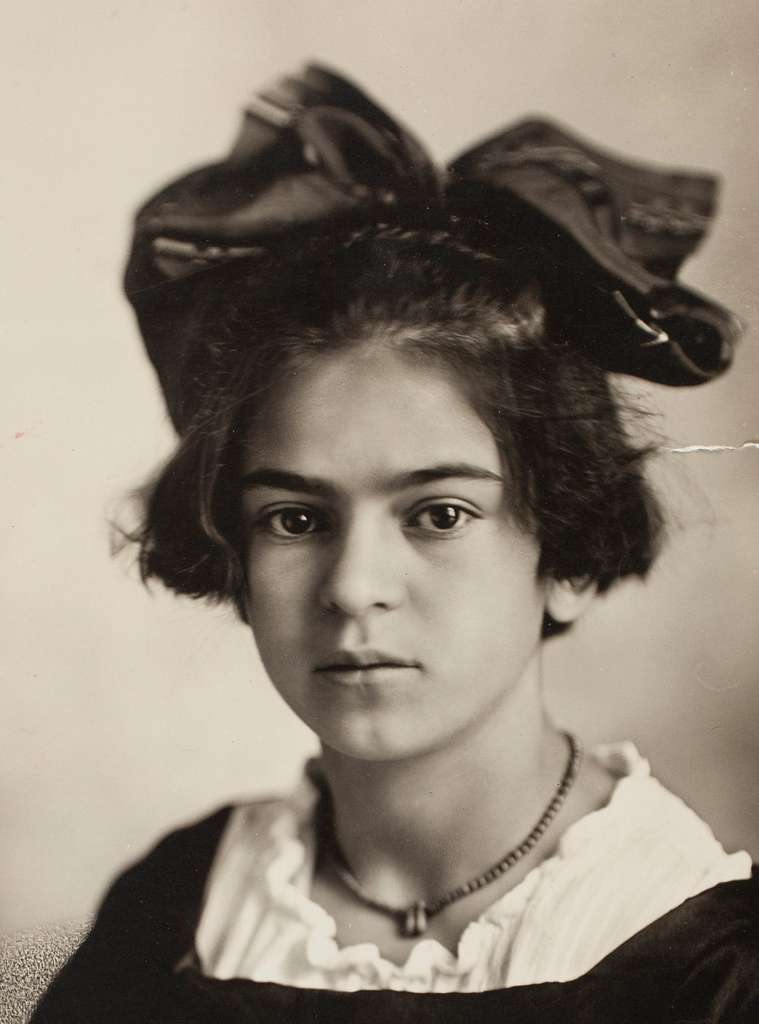
But despite this, her self-esteem was low during her childhood. She was bullied in school for having polio and later went on to write: “I used to think I was the strangest person in the world but then I thought there must be someone just like me. Well, if you are out there and read this, yes, it’s true. I’m here and I’m just as strange as you.”
While her story is laced with empowerment, it is also one of great tragedy. At the age of 18, on a bus with her childhood sweetheart, Alejandro Arias, whom she’d one day hoped to marry, she survived a road accident that killed multiple passengers inside.
While Arias suffered only minor injuries, Frida was impaled by an iron handrail. After being rushed to hospital, doctors found that the crash had severely damaged her spine, collarbone, pelvis and right leg.
Ever since, she was in and out of hospitals, bedridden, and constantly feeling restricted by the surgical brace that doctors used to help realign her spine after it was fractured in three places. The sense of entrapment she felt is perfectly captured in her painting, ‘The Broken Column’.

Beginning as an Artist
Once she was able to walk again (after her multiple surgeries), she was forced to wear a plaster cast on her leg, which she adorned with ribbons in vibrant yellow, orange and red hues. However, despite her immense pain, she continued to paint, attracting the attention of her future husband, Diego Rivera, a Mexican painter 20 years her senior.
Even when she moved to the US after their marriage, Frida still loved expressing her Mexican heritage by cutting fresh flowers for her hair daily, flaunting her Tehuana dresses and wearing her favourite red lipstick. We can see that she also embraces her heritage in her artwork.
Her painting, ‘Self-Portrait on the Border’, shows her caught between two worlds: one of industrialising America, and the other being Mexico, a country more in touch with the natural world, its spirituality and its ancestry.

Mexicanidad and Rejecting Colonialism
In a sense, her artwork and fashion are a rebellion against colonialism. Frida was alive during the Mexicanidad movement, and her work reflects the political and social climate of her home country. Mexico’s cultural elite aspired to emulate European culture, and the Mexicanidad movement aimed to challenge this by highlighting the beauty of Mexico’s culture and history, unthwarted by colonialism.
This movement bled into Mexico’s artistic sphere, encouraging painters to use indigenous motifs and symbolism. In one of Kahlo’s most iconic paintings, ‘Self Portrait with Thorn Necklace and Hummingbird’, we can see she was heavily influenced by this desire to showcase her cultural heritage.
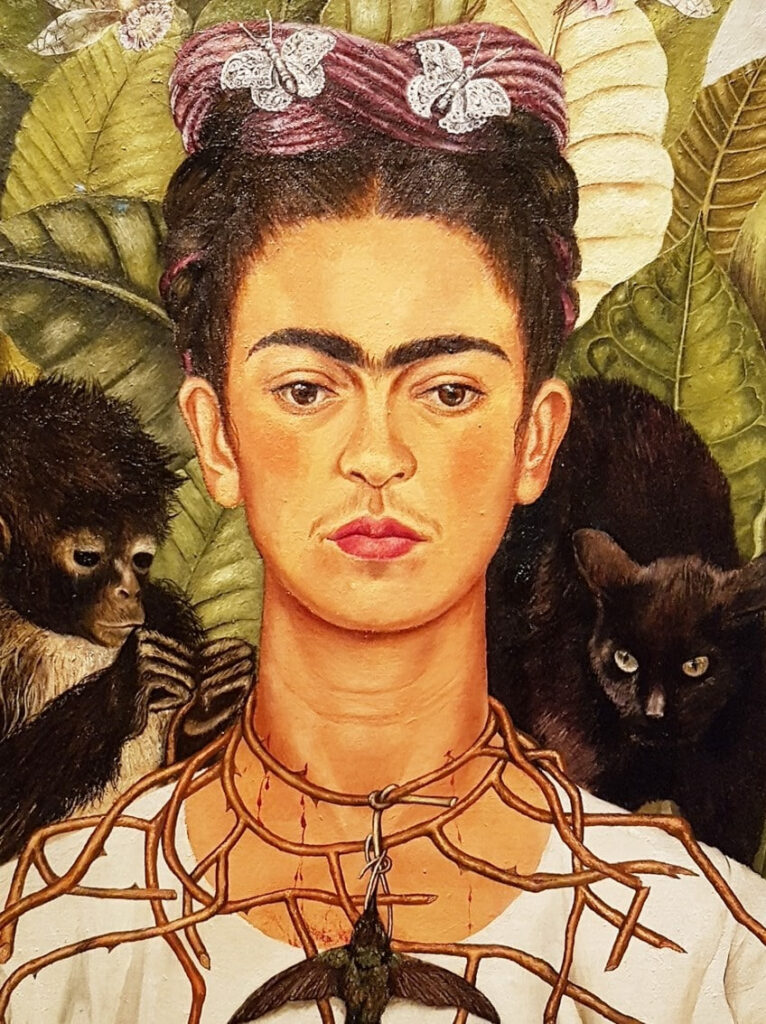
What is so striking about this image is Frida’s piercing gaze, staring unapologetically out at the viewer. Her expression is serene despite the thorns digging into her neck, an interpretation of Jesus’s crown of thorns from the Bible, symbolising the struggles she faced on a daily basis due to her injuries. Her use of natural imagery is also apparent: the hummingbird (which symbolises love and vitality in Mexican culture) hangs lifeless from her necklace, the black cat (associated with bad luck) looks agitated, and the monkey (which represents the devil) is tugging at the thorns around Frida’s neck, prolonging her agony.
So, not only does Kahlo use indigenous Mexican motifs to depict her struggles, but she also rebels against the West by using symbolism associated with one of the most important figures in European culture – Christ – and making it her own.
Pain as a point of Inspiration
The injuries she sustained never stopped her from painting, one could argue they drove her to paint more frequently, and eventually in 1939, she held an exhibition of her artwork in the Renou & Colle gallery in Paris. There, she made her grand entrance, having been carried into the gallery on her bed, elaborately dressed as always.
While her career was a great success, and her notoriety since her death has grown tenfold, Frida had always dreamed of having children of her own. But it was not to be. The accident had not only fractured her pelvis, but it had also punctured her uterus, causing her to have multiple miscarriages while bedridden in the Henry Ford Hospital, in Detroit.
Distraught, Frida channelled her grief the only way she knew how: into her art. The painting she titled ‘Henry Ford Hospital, 1932’ is the first known piece of art to ever explicitly depict a miscarriage. When describing her work, she didn’t like to use the term ‘surrealist’ as she said: “I paint… my own reality”.
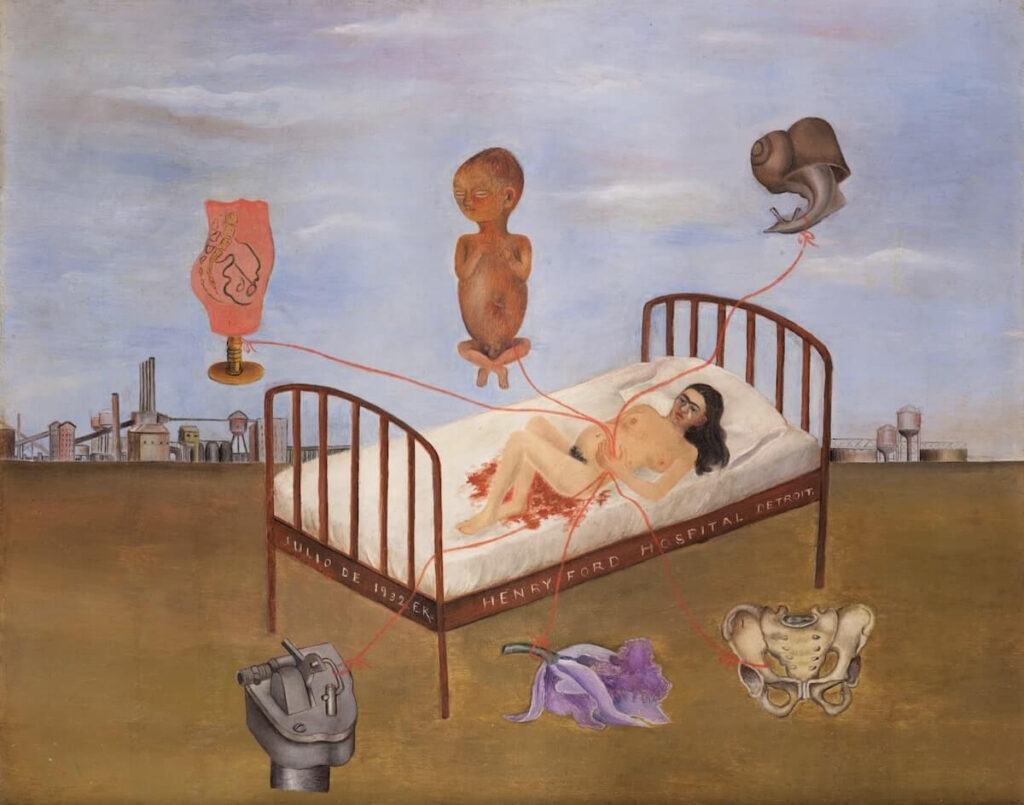
Marriage to Diego Rivera
Her marriage to Rivera was a tumultuous one. While both of them had affairs during their marriage (Kahlo is rumoured to have had multiple lovers, including Leon Trotsky, artist Isamu Noguchi and folk singer Chavera Vargas), Frida was left particularly devastated when she discovered that her husband had cheated on her with her younger sister, Cristina.
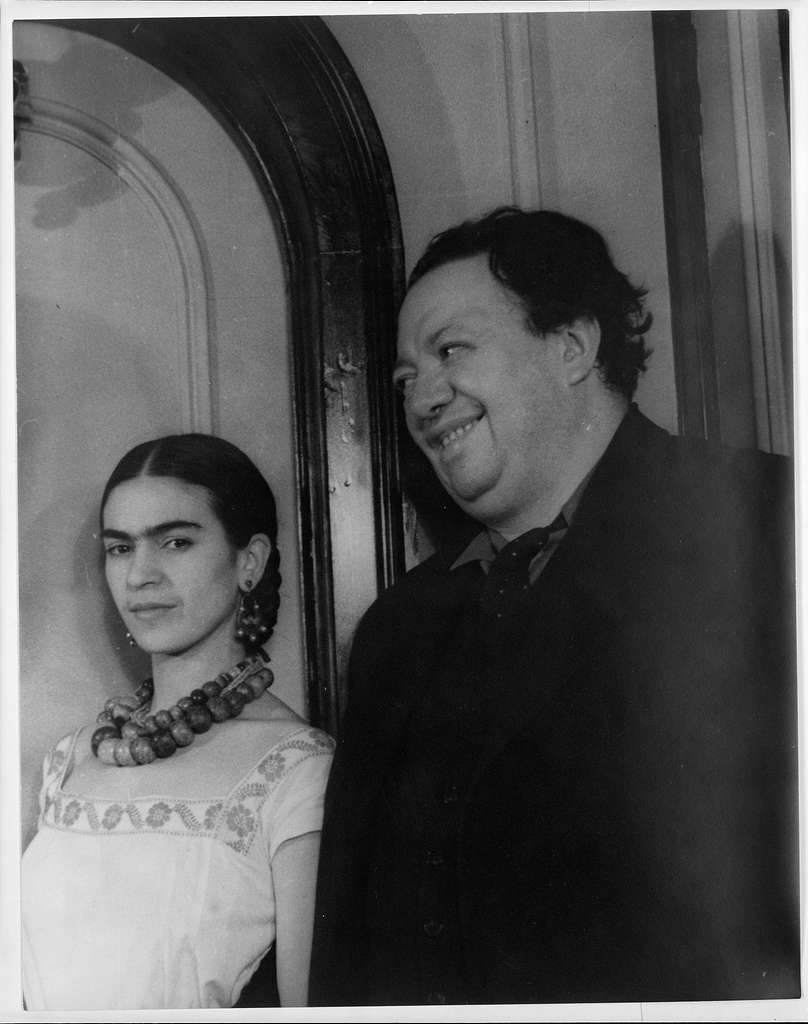
After returning home from her Paris art exhibition, Rivera divorced Kahlo in 1940 (although they remarried again that same year), and so the painting ‘Self-Portrait with Cropped Hair’ was born.
Here, we see a depiction of Frida where she has chopped off her hair and shed her make up. Gone are her colourful dresses; instead, she wears an oversized black suit and shirt. Above her are song lyrics: “See, if I loved you, it was for your hair // Now you are bald, I do not love you anymore.”
The painting encapsulates both her despair and her desire for freedom. Some critics have speculated that the suit Frida wears is Rivera’s, an attempt to cling onto him after their divorce. Additionally, the barren landscape, devoid of the lush natural imagery often seen in the background of her paintings, seems to compound her sense of loss without Rivera in her life. Simultaneously, there is a sense of empowerment. Her face does not convey her grief; Frida’s expression in the portrait seems resolute.
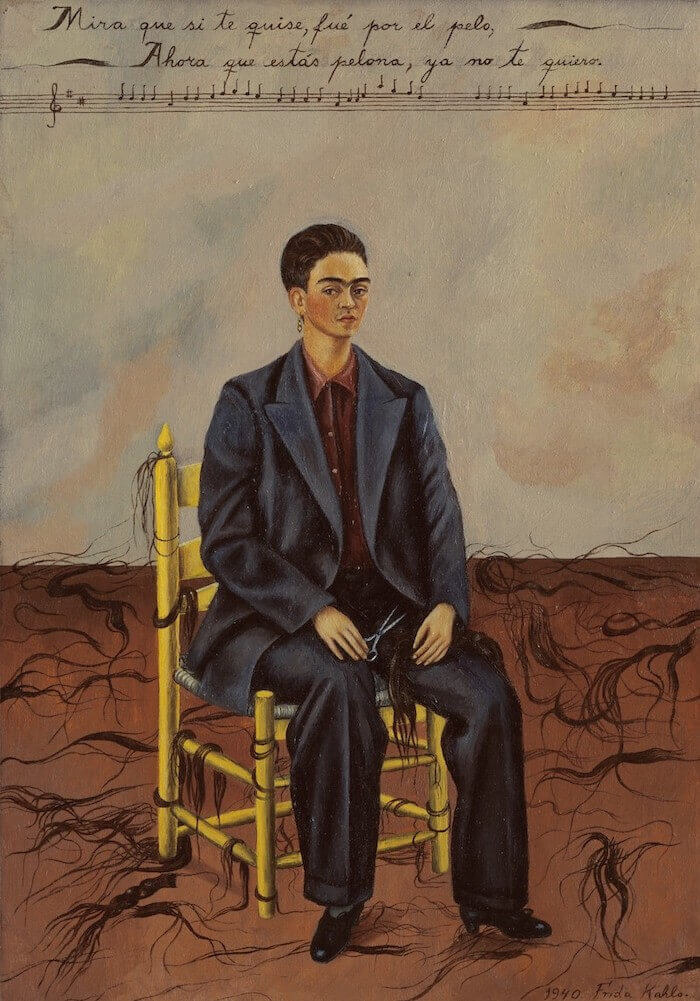
Perhaps by donning a man’s suit, she wishes to gain the independence and autonomy that came with being a man in 1940s. While women in both America and Mexico were afforded more social and economic freedom than in previous decades, there was still an expectation that they would get married and raise children, therefore becoming dependent on a husband. Instead of being tethered to a man, Frida becomes a man in this portrait. By chopping off the symbol of femininity, her long hair, she regains control over her life. Frida was known to revitalise her style regularly and blur the lines between masculinity and femininity, opting to wear a three piece suit in a family photo. This is another reason why many critics refer to Kahlo as a feminist figure.
Frida’s Final Years
Eventually, Frida moved back to her beloved childhood home, a Blue House in Coyoacán, Mexico, painted bright cobalt blue on the outside and just as embellished as her dresses on the inside. Today, it serves as The Frida Kahlo Museum.
For a decade, the renowned painter went on to teach art to students attending La Esmeralda School, despite the fact that she mostly remained in her hospital bed. Kahlo’s students adored her charisma so much that they visited her everyday in the hospital to sneak presents into her ward, and even nicknamed themselves ‘Los Fridos’. They valued her for her humour, her wit and above all, her words of wisdom – and so can we.
“At the end of the day,” she said, “we can endure much more than we think we can.”
She never let her suffering hold her back and believed that she “must fight with all [her] strength”, being both a lover of life and embracer of death. In fact, her philosophy can be perfectly summed up in her last painting, finished just eight days before her death, which she penned ‘Vida la Vida’, or ‘Long Live Life’.
We can find inspiration in her ability to enjoy life to the fullest and her determination despite the numerous challenges she faced. As she famously wrote in one of her letters, “It is not worthwhile to leave this world without having had a little fun.”
She died in 1954, at the age of 47. Her ashes remain in her beloved Blue House, in a clay urn on her dressing table.
